It has long amused me that one of America’s favorite plays is essentially pro-communist propaganda.
“But wait,” I hear you saying, “Isn’t Les Mis about the French Revolution, which is totally like the American Revolution’s little brother?”
No. Les Miserables takes place during the June Rebellion of 1832. The French Revolution happened in 1789, about 40 years earlier.
That’s kind of like the difference between 1945 and 1988, or 1968 and 2012.
“Ah,” you say, “but weren’t the French into all of that liberty and equality stuff? Isn’t that what the revolution is all about, just like the American Revolution?”
Look, did you hear anyone in the musical singing about how the taxes on their tea/coffee/wine were too high? Or how they wanted to vote? Or pretty much anything about liberty?
The whole play is about how much life sucks for the French proletariat because they are being oppressed by the state and the petty bourgeoisie.
Communism and democracy were not originally thought of as opposites. Communism is just a later evolution of the same intellectual tradition that brought us democracy.
You think of government and business as two different entities–unless you are an anarchist, of course. If you are an anarchist, you know they are one, and you are correct. It doesn’t matter who wears the boot that stomps your face–king, president, dictatorship of the proletariat, corporate boss–it’s still a boot stomping your face.
Not long before the American and French Revolutions–the big one, in 1789, with Robespierre and the guillotines and the Tennis Court Oath and whatnot–the economic and political system in Europe were one and the same.
You knew this, of course, because you studied Medieval and early modern European economics, manorialism and feudalism in school during the 11 months of white history, right? If so, you can skip to the end.
But if all you remember from history class is something about a bunch of art that was painted in the Renaissance, and then blah-blah-Athenian Democracy-something-something-American Revolution?
*Sigh*
Okay. So “feudalism,” is basically a contractual system of obligations and responsibilities between land owners and tenants. Wikipedia defines it as, “a combination of legal and military customs in medieval Europe that flourished between the 9th and 15th centuries. Broadly defined, it was a way of structuring society around relationships derived from the holding of land in exchange for service or labour.” This is the super-simplified version.
The Medieval Lord, starting in the early Middle Ages, was the guy who owned a big chunk of land, typically called a manor. He owned it because he or his ancestors had conquered it, or because he or his ancestors got it from the king who’d conquered it, and no one else had the military power to conquer him and take it away from him.

The lord’s vassals were people who received a chunk of land to live on and farm in exchange for swearing loyalty and rendering certain services to the lord. For example, they might be required to tend to the lord’s fields 2 days a week (leaving 5 days for their own.) Or they might be required to serve one month a year in the lord’s army, in exchange for which the lord guarantees that they won’t get conquered.
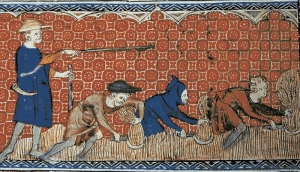
Economically, the vassal might be required to only take his grain for grinding to the lord’s mill, in exchange for which the lord guarantees him access to a functional mill, or to only mate his cows to the lord’s bull, in exchange for which the lord guarantees a higher quality bull than the peasant could afford on his own. The vassals were required to take their disputes to the lord for adjudication, and the lord was required to provide sound legal judgment on the cases brought before him.
The manor was the basic economic and legal unit of medieval society, producing all or nearly all of the goods necessary for its residents, including a bakery and mill for bread production, a tannery for leather, and quite often, luxury trade goods, like wine. All of this was coordinated and directed by the lord, (or the lord’s employees).
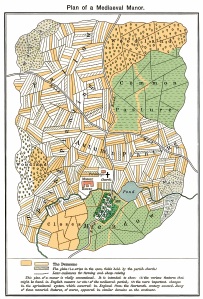
The system was not limited to lords and their vassals; not only were there a variety of noble landholders, independent landholders, etc., the Roman Catholic Church also owned a great deal of land, which was similarly administered. I have read that 20% of the land in France on the eve of the French Revolution was actually owned by the Catholic Church. The system persists, diminished, in many monasteries–like the Grande Chartreuse Monastery, whose monks and nuns have supported themselves via the production and sale of Chartreuse Liquor since the early 1700s. (The monastery itself was founded in 1084.)


HBD Chick has all sorts of interesting things to say about manorialism, and in particular, how it (and the Catholic decree against cousin marriage,) may have selected for certain personality traits that influenced the development of modern Europe.
Interestingly, during the Ostsiedlung, the German eastward expansion that took place between about 1,000 and 1945 the 1400s, manorialism was spread to eastern Germany via recruitment of people from western Germany to come live in what we would now call “company towns.”
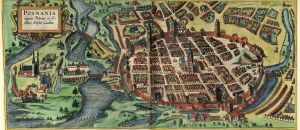
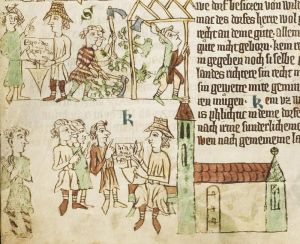
I believe the Germans also used a similar selection process when immigrating to German-founded towns in the US, probably resulting in German immigrants to the US being a particularly high-quality lot.
But an even more interesting case is the Dutch East India Company. Established in 1602, it was granted by the Dutch parliament,
“a 21-year monopoly to carry out trade activities in Asia. It is often considered to have been the first multinational corporation in the world [2] and it was the first company to issue stock.[3] It was a powerful company, possessing quasi-governmental powers, including the ability to wage war, imprison and execute convicts,[4] negotiate treaties, strike its own coins, and establish colonies. … By 1669, the VOC was the richest private company the world had ever seen, with over 150 merchant ships, 40 warships, 50,000 employees, a private army of 10,000 soldiers, and a dividend payment of 40% on the original investment.[27]” —Wikipedia
The Dutch East India Company engaged in a bunch of wars, and its territory later became the Dutch East Indies, which in turn expanded and became the modern country of Indonesia, to say nothing of their activities in other countries.
Closer to home,
“Nine of the original American colonies were colonial corporations whose charters granted them broad governmental powers subject to retention of “English liberties” by the residents therein and the king’s right to collect customs on merchant shipping. “…one Body corporate and politique in Fact and Name, by the Name of the Governor and Company of the Mattachusetts Bay…” was typical language in these charters. These corporations were even sometimes (as in this case) sold from one set of investors to another: the modern legal distinction between commercial and political (e.g. municipal) corporations was not yet common. …
“The idea that a majority can “consent” for other members their class also comes from medieval corporate law (it certainly does not come from contract or tort law). “Constitution” was often used as a synonym for “charter.” The United States Constitution can be profitably viewed as a corporate charter, ratified by a majority of delegates to conventions in each State but shorn of royal imprimatur. “The Queen…grants…” became “We the people of the United States…do ordain and establish.” “We the People” granted rights to ourselves, in some vague collective way. This makes no sense in legal terms outside the context of corporate charters.” –Unenumerated’s “Corporate Origins of the United States“
Anyway, by the time of the American Revolution, feudalism was on the decline. It was still vaguely around in France, making trouble for people now that regular economic activity crossed old feudal jurisdictions, and Wikipedia claims that some feudal landholdings were still around in Germany until just before WWII, but large tracts of free, open land on the American continent meant that feudalism had never been a major force over here. When American colonists ran short on land, they could just engage in a little class warfare and redistribute it from the Indians to themselves.
What is this fancy new idea that came roaring in with the American and French Revolutions? What is democracy? We Americans think of democracy as simply the right to vote for our own government. Where the opening up of vast new tracts of land had effectively made each man the master of his own economic destiny, the American Revolution made them, collectively, masters of their political destinies.
But back on the continent, the vestiges of feudalism still persisted; vast tracts of land were not free for the taking. Revolution came not just to the political, legal end of the system, but also the economic.
“In the eighteenth century the French philosopher Jean Jacques Rousseau in his hugely influential The Social Contract (1762), outlined the basis for a political order based on popular sovereignty rather than the rule of monarchs.[4] His views proved influential during the French Revolution of 1789, in which various anti-monarchists, particularly the Jacobins, supported the idea of redistributing wealth equally among the people, including Jean-Paul Marat and Gracchus Babeuf. The latter was involved in the Conspiracy of the Equals of 1796 intending to establish a revolutionary regime based on communal ownership, egalitarianism and the redistribution of property.” — Wikipedia
By the time Les Miserables was published in 1862, Marx’s Communist Manifesto was already 14 years old, and communism had gone from being a sub-text in the French Revolution to a full-fledged ideology in its own right. The 1832 rebellion described in Les Miserables falls smack into the time of the early communist development, predating the publication of the Communist Manifesto by only 16 years.
Les Miserables is not about liberty, in its anarchic sense nor its American sense. It is not, for the most part, about the values that compelled Americans into their revolution. It is about the tribulations of the poor, miserable, wretched French proletariat. It is about the democratization not of the political order, but of the economic order.
It’s really the perfect combination. American elites lean communist and can appreciate Les Mis for what it is without explicitly endorsing Stalinism. But the American lower classes can also join in, enjoying the illusion that it has something to do with the founding American mythology.
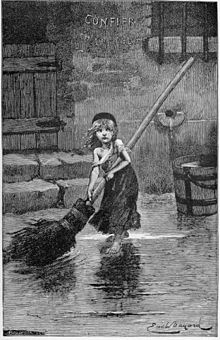

liberté-égalité-fraternité-guilliotiné
LikeLike
[…] Source: Evolutionist X […]
LikeLike
[…] Parenthood, Family, Nation, and History, Land Value Tax and Coherent Ownership for Civilization, Les Miserables, Time Preference: the most under-appreciated mental […]
LikeLike
love the story, just recently read it for the first time last year, it was a great read
LikeLike
Hello,
I would like to translate your post into my languge (Brazilian Portuguese) and post it on my facebook page. May I? I would need your name if that is okay (it can be a fake name if that is too much too ask). I would like your permission, that´s all.
This is my personal page. https://www.facebook.com/renzo.nery
And this is the page I would post the translation. https://www.facebook.com/globalleft/?ref=ts&fref=ts
Regards,
Renzo
LikeLike
Sure, feel free. “EvolutionistX” is as good a name as any.
Take care. :)
LikeLike
[…] I wrote about the development of these joint stock corporations and their importance in the history of the United States and Europe back in Les Miserables. […]
LikeLike
Communism was the rallying of poor rubes to reject established moral notions in order to make way for “free trade” where con men could make out not “like” bandits but as the bandits they were.
LikeLike